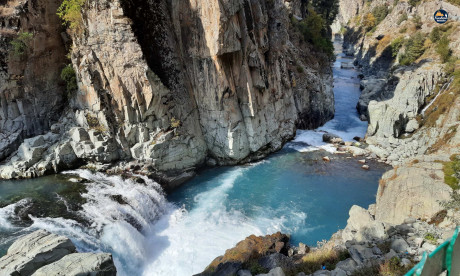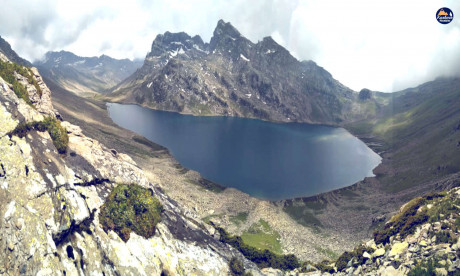Gurez: The Gateway to Paradise in Kashmir’s Embrace. Nestled in the northern realms of Kashmir, Gurez unfolds as an enchanting corridor to paradise, beckoning travelers with its pristine beauty and untouched landscapes. This hidden gem, cradled within the majestic Himalayas, offers a unique and immersive experience, making it a must-visit destination for those seeking tranquility and natural splendor.
Geographical Splendor:
Gurez is situated in the northern part of the Kashmir Valley and is known for its breathtaking landscapes, towering peaks, and meandering rivers. The region shares borders with both India and Pakistan, adding an element of historical and geopolitical significance to its charm.
The Silk Road Gateway:
Gurez holds historical importance as a gateway to the famous Silk Road, an ancient trade route that connected the East and West. This corridor has witnessed the passage of traders, nomads, and adventurers, leaving behind echoes of a bygone era.
Habba Khatoon Peak:
Dominating the Gurez Valley is the pyramid-shaped Habba Khatoon Peak, named after the renowned 16th-century Kashmiri poetess. The peak stands as a testament to both natural grandeur and cultural heritage. Gurez Valley, with its indistinct yet grand structures, resonates with the legendary verses of Habba Khatoon.
Gurezi Kala Zeera:
The outskirts of Habba Khatoon Peak are home to one of the world’s most expensive cumin seeds known as Gurezi Kala Zeera. The local community of Barnoi collects these prized seeds, adding an economic dimension to the natural wealth of the region.
Unveiling the Legend of Habba Khatoon:
Habba Khatoon, originally named Zoon, was not merely a peak but a Kashmiri poetess whose verses echoed the pain of loss and the quest for love. The mountain that bears her name stands as a tribute to her legendary contributions to Kashmir’s cultural heritage.
Adventure and Legends Merge:
Gurez isn’t merely a destination; it’s an adventure waiting to unfold. The pyramid-shaped peak, the legendary stories, and the timeless landscapes create a tapestry where adventure and cultural richness seamlessly merge.
Gateway to the Silk Road:
Gurez, with its rich history and geographical significance, serves as a gateway to the Silk Road through Central Asia. This ancient route, once bustling with trade and cultural exchange, now offers modern explorers a chance to tread the same paths as those who came before.
A Tapestry of Nature and Culture:
Gurez, often referred to as the “corridor to paradise,” weaves together the threads of nature’s grandeur and the rich tapestry of Kashmir’s cultural heritage. Travelers who venture into this hidden realm find themselves amidst towering peaks, meandering rivers, and the echoes of a poetic legacy.
Gurez stands as an invitation to paradise, where the beauty of nature converges with the echoes of ancient trade routes and poetic verses. For those seeking an escape into the untouched realms of Kashmir, Gurez awaits, promising an immersive journey into the heart of paradise.






